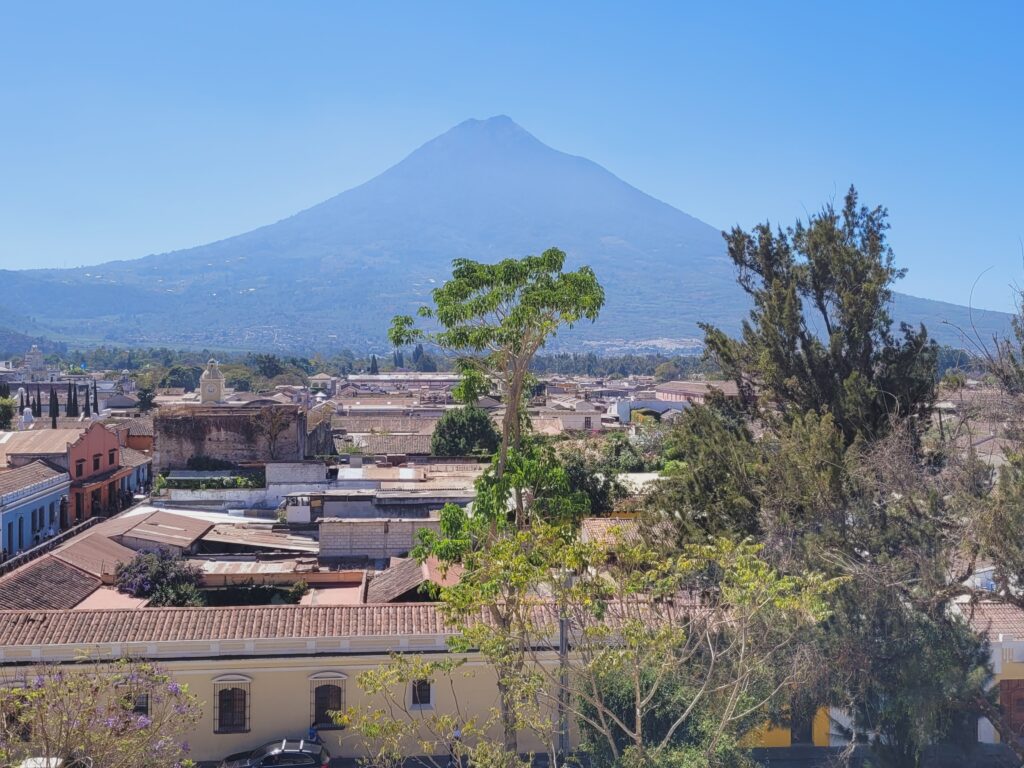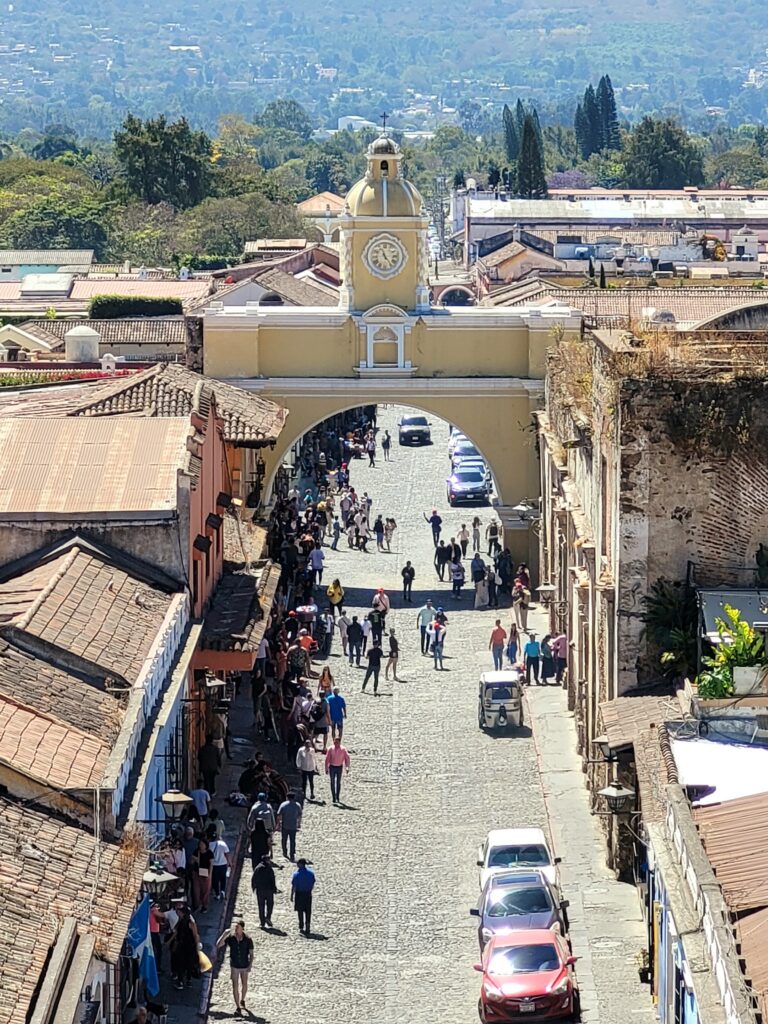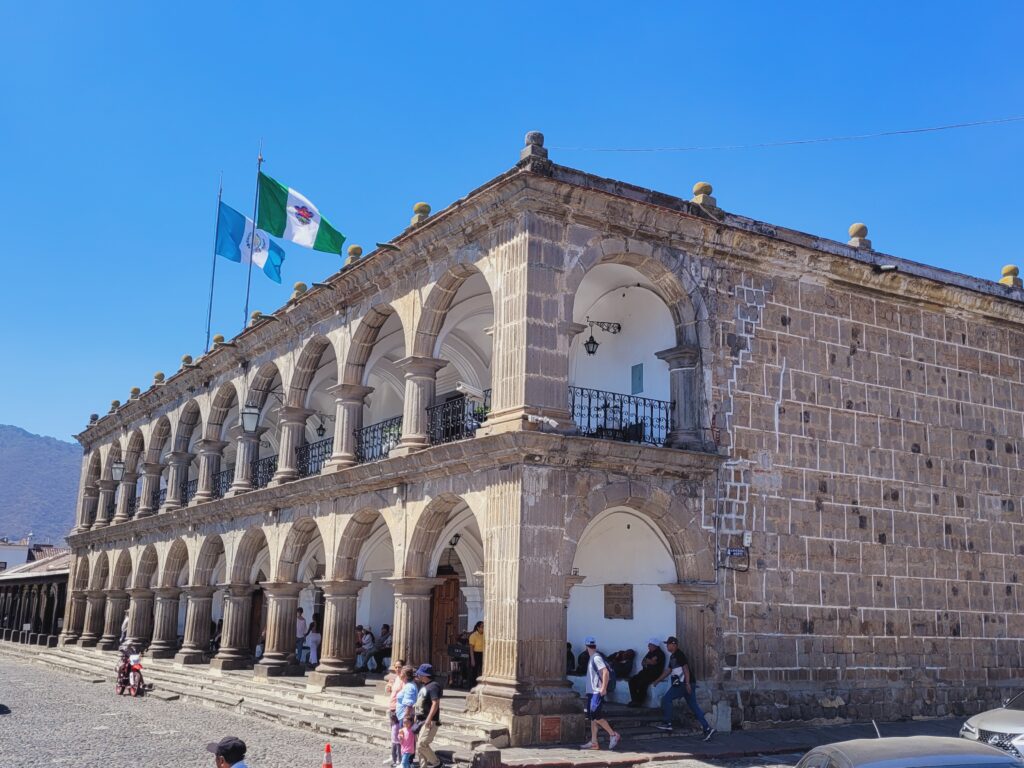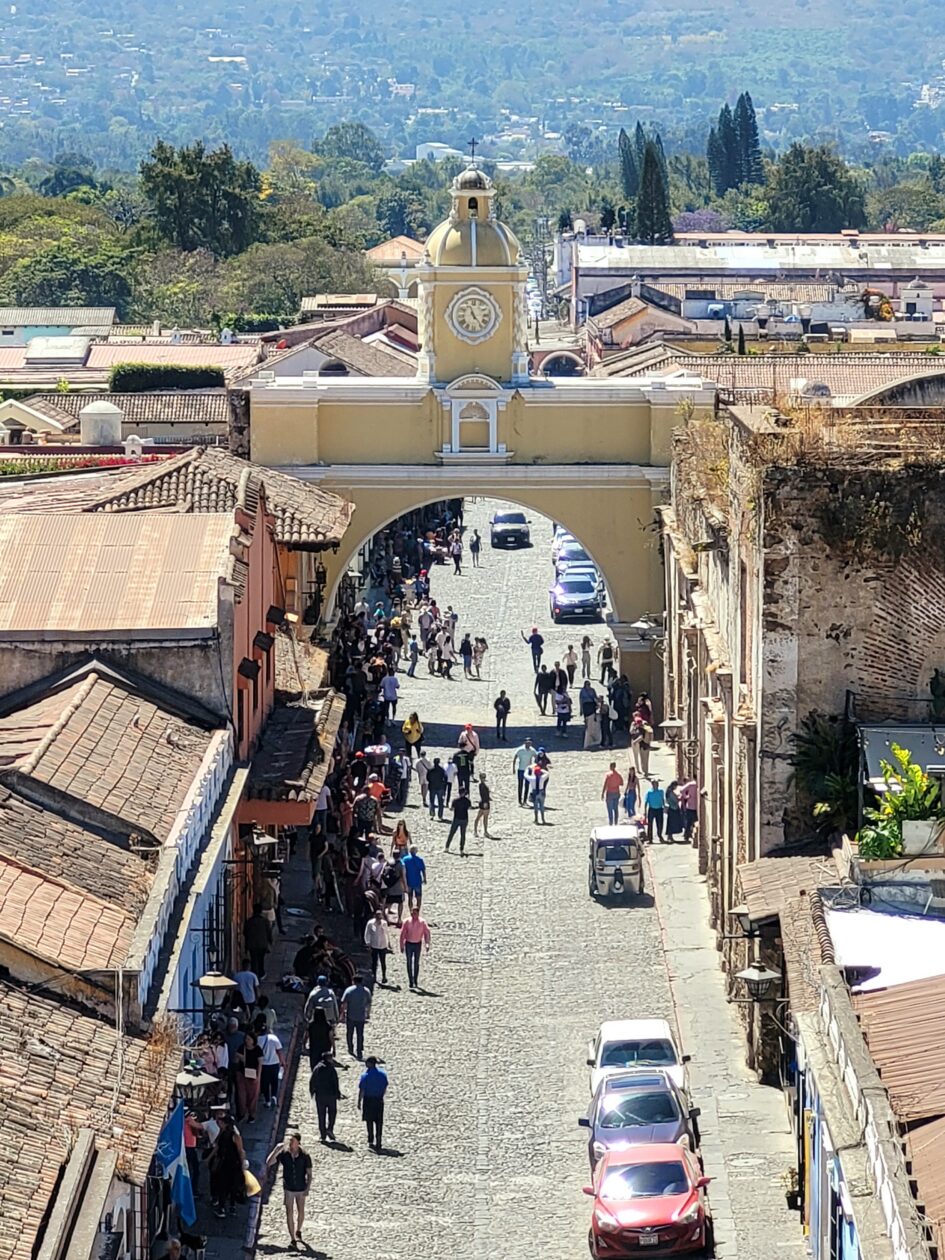Antigua was the capital of the Kingdom of Guatemala (a Spanish colony) from 1543 to 1773. During this time, many magnificent religious and secular buildings were constructed in the city. In the 1870s the city had a population of about 65,000. Today the city has a population of around 35,000. Unfortunately, a very strong earthquake in 1773 destroyed most of the city’s buildings. Then it was decided to move the capital to Guatemala City. The destroyed city declined even more as it was abandoned by most of its inhabitants.

In the 20th century, thanks to the involvement of the local community, the restoration of the better preserved and more impressive colonial buildings began. The city seemed to be on the road to recovery. Unfortunately, the 1976 earthquake destroyed the rebuilt buildings. Sadly, most of the colonial buildings are ruins, some better preserved, some worse, but ruins nonetheless. In 1979, Antigua was added to the UNESCO World Heritage List. At present, Antigua is a weekend destination for Guatemala City residents. Without advance reservations, it is very difficult to find decent weekend accommodation. The former capital also attracts visitors from abroad.
In a nice little town about 40 kilometers from Guatemala City we stayed at the Casa Nikté Hotel. We paid Q200 for a double room with bathroom.

You can see all of Antigua’s attractions in 1 full day. However, I recommend two days, including Sunday. Colorful religious processions with locals in traditional costumes are often held on Sundays. Especially for the processions, religious images are made out of colored sand.
Antigua, a city with quite a lot of traffic, is certainly not an ideal destination for relaxation like Lake Atitlan. Most of the monuments are in ruins. The buildings have been destroyed by the earthquakes that regularly hit the area. However, it is worth noting that some of the buildings were built so solidly that they withstood even the strongest earthquakes that have plagued Antigua.
La Merced Church, built in the mid 18th century is a very interesting site. The most interesting part of the church is the bell tower, which offers a view of the city and the surrounding volcanoes.
Other places of interest are the Plaza Mayor with its surrounding buildings, Iglesia El Carmen, Arco de Santa Catelina, Catedral de San Jose, Iglesia de San Francisco.

Unfortunately, there is practically an entrance fee for most ruins. The fee is Q40 for foreigners and Q5 for locals. There is no entrance fee to some of the ruins but the sites are closed to visitors. You can see them through a locked gate. The best thing to do is to walk around the whole city. You can choose the ones you go into.

Leave a Reply